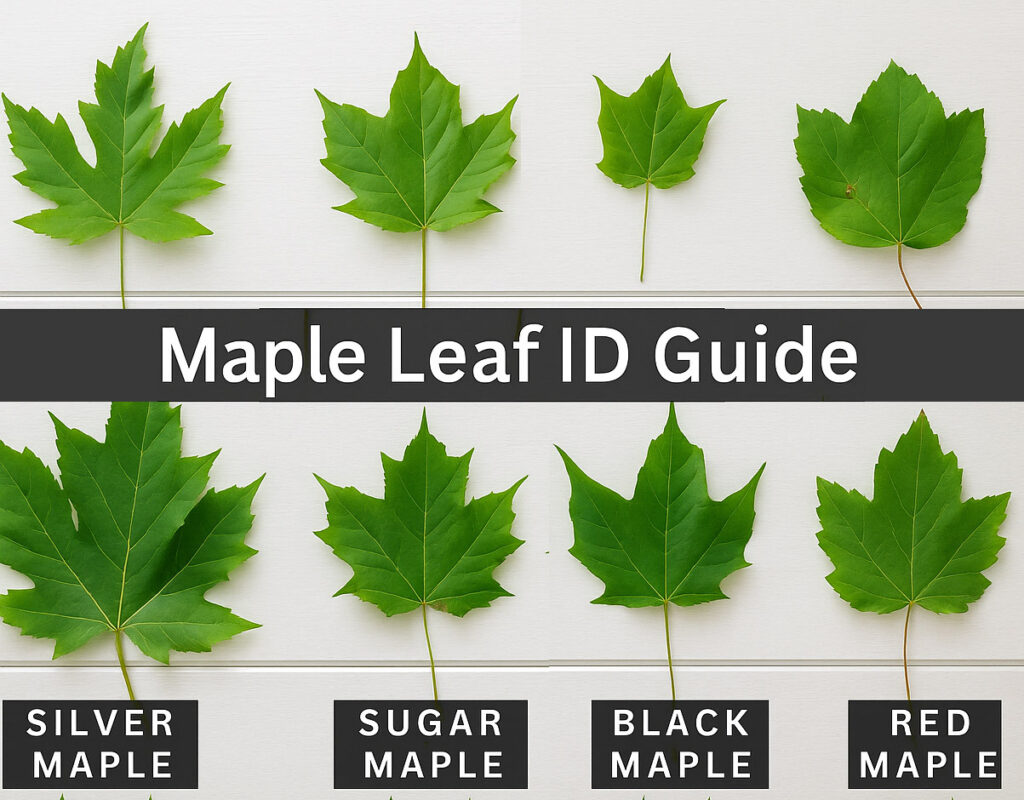Crown-tipped Coral Fungus (Artomyces pyxidatus)

In the image above, you will note slight variations between four different types of maple trees — red maple (Acer rubrum), silver maple (Acer saccharinum), sugar maple (Acer saccharum), and black maple (Acer nigrum). You may also note that there are many similarities and things they have in common.
| Feature | Red Maple (Acre rubrum) | Silver Maple (Acre saccharinum) | Sugar Maple (Acre saccharum) | Black Maple (Acre nigrum) |
|---|---|---|---|---|
| Lobe Count | 3–5 (usually 3 major) | 5 (deeply cut) | 5 (rarely 3) | 3 (occasionally 5, but usually 3) |
| Lobe Shape | V-shaped notches, serrated edges | Deep U-shaped notches, deeply cut | U-shaped notches, smooth between lobes | Shallow notches, drooping, rounded lobes |
| Leaf Margin | Serrated/toothed | Deeply toothed, irregular | Smooth (not toothed) | Smooth or slightly wavy, often drooping |
| Underside Color/Texture | Sometimes lighter, not silvery | Silvery-white, smooth | Slightly lighter, usually smooth | Paler, densely hairy (velvety) |
| Leaf Size | 2–4 in (5–10 cm ) | 3–6 in, large (8–16 cm) | 3–6 in (8–15 cm) | 6 in, broad (Up to 16 cm) |
| General Leaf Appearance | Flat, typical maple shape | Deeply cut, lacy | Classic maple, broad | Drooping, soft, velvety underside |
While this article focused on the similarities and differences between the leaves of Silver Maple, Sugar Maple, Black Maple, and Red Maple, it’s important to note that these are not the only Acer species suitable for syrup making. I hope this guide has helped you better identify the maple trees in your woods, but keep in mind that other varieties—such as the Sycamore Maple or the Big Leaf Maple—can also produce delicious syrup. With a keen eye and a bit of curiosity, there’s always more to discover in the sugarbush.
Are you interested in tapping maple trees to make maple syrup? Check out this How to Make Maple Syrup Guide to get started. We would be honored for the opportunity to help you on your maple syrup journey. 920-202-4500
(By clicking the resource links in this list, you will be leaving SmokyLakeMaple.com)